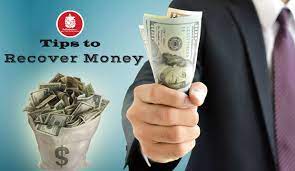In an era where financial markets are more accessible than ever, the report a cryptocurrency scam allure of quick wealth has attracted many to trading. However, with the surge in trading opportunities comes an equally significant rise in trading scams. These deceitful schemes prey on the hopes and dreams of unsuspecting investors, often leading to substantial financial losses. This article delves into the world of trading scams, exploring how they operate, the red flags to watch for, and how to protect yourself.
Understanding Trading Scams
Trading scams are deceptive practices designed to exploit traders, often by promising high returns with minimal risk. These scams can take various forms, from Ponzi schemes to fake trading platforms, and they often target individuals with limited trading experience or those eager for quick gains.
1. Ponzi Schemes: Named after Charles Ponzi, these schemes promise high returns with little to no risk, relying on new investors’ money to pay returns to earlier investors. The scheme collapses when it becomes difficult to recruit new investors or when the scammers decide to disappear.
2. Pump and Dump: This involves artificially inflating the price of a stock through false or misleading statements, often using social media or online forums. Once the price is high, the scammer sells their shares at the inflated price, leaving other investors stuck with worthless stock.
3. Fake Trading Platforms: Scammers create fraudulent trading websites or apps that appear legitimate but are designed to steal money from users. These platforms may offer convincing user interfaces and promises of high returns but ultimately disappear once they’ve collected enough funds.
4. Signal Scams: These scams involve individuals or companies claiming to provide insider trading signals or investment tips for a fee. The scammers often use persuasive tactics and may even manipulate results to convince victims of their effectiveness.
Red Flags to Watch For
1. Unbelievable Promises: Be wary of any trading opportunity that promises guaranteed high returns with minimal risk. In the world of trading, high returns typically come with high risk, and anyone promising otherwise is likely being dishonest.
2. Lack of Transparency: Legitimate trading platforms and investment opportunities will provide clear information about their operations, risks, and fees. If a platform or individual is evasive or vague about these details, it’s a major red flag.
3. Pressure Tactics: Scammers often use high-pressure sales tactics to rush individuals into making decisions. They may create a sense of urgency or suggest that the opportunity will be gone if you don’t act quickly.
4. Unregulated Platforms: Ensure that any trading platform or investment opportunity is regulated by a recognized financial authority. Unregulated platforms are more likely to be fraudulent.
5. Unverifiable Credentials: Scammers often present themselves as experts with impressive credentials. Always verify their qualifications and seek out independent reviews or feedback from other traders.
Protecting Yourself
1. Research Thoroughly: Before investing or using any trading platform, conduct thorough research. Check for reviews, regulatory status, and any red flags that may indicate a scam.
2. Use Regulated Platforms: Stick to trading platforms and brokers that are regulated by reputable financial authorities. These entities have strict standards and offer some level of protection for investors.
3. Be Skeptical of High Returns: Always approach offers of high returns with skepticism. Remember that if it sounds too good to be true, it probably is.
4. Educate Yourself: The more you understand about trading and the financial markets, the better equipped you’ll be to recognize and avoid scams. Consider taking courses or reading reputable resources on trading.
5. Report Suspected Scams: If you encounter a suspicious trading scheme, report it to the appropriate regulatory authorities. Your actions can help prevent others from falling victim to the same scam.
Conclusion
Trading scams are a significant threat in the financial world, preying on the ambitions and naivety of traders. By staying informed, vigilant, and cautious, you can protect yourself from these fraudulent schemes and ensure that your trading journey remains both profitable and secure. Remember, the key to successful trading lies in knowledge, skepticism, and careful decision-making.




